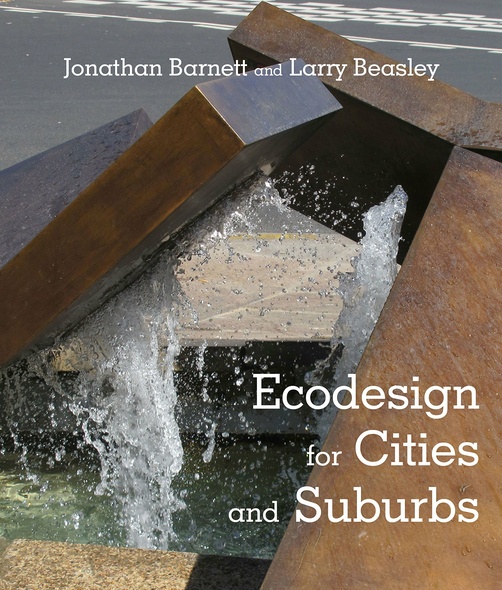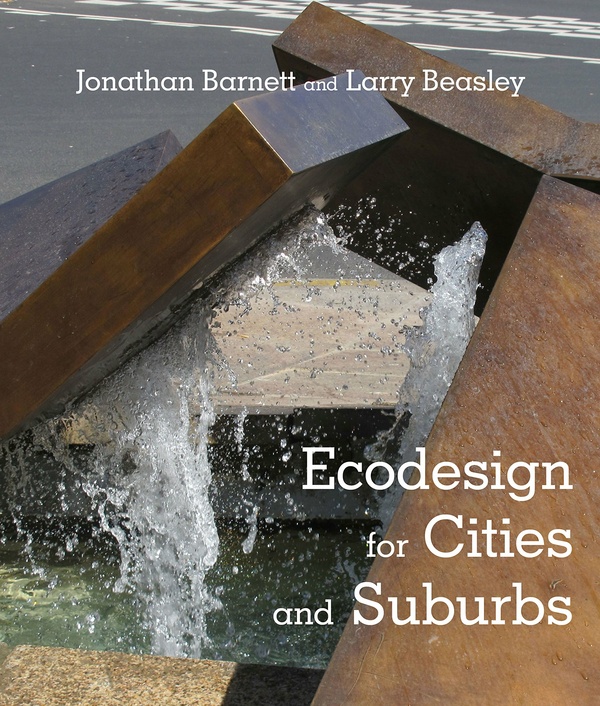As world population grows, and more people move to cities and suburbs, they place greater stress on the operating system of our whole planet. But urbanization and increasing densities also present our best opportunity for improving sustainability, by transforming urban development into desirable, lower-carbon, compact and walkable communities and business centers.
Jonathan Barnett and Larry Beasley seek to demonstrate that a sustainable built and natural environment can be achieved through ecodesign, which integrates the practice of planning and urban design with environmental conservation, through normal business practices and the kinds of capital programs and regulations already in use in most communities. Ecodesign helps adapt the design of our built environment to both a changing climate and a rapidly growing world, creating more desirable places in the process.
Throughout the book, the ecodesign framework is demonstrated by innovative practices that are already underway or have been accomplished in many cities and suburbs—from Hammarby Sjöstad in Stockholm to False Creek North in Vancouver to Battery Park City in Manhattan, as well as many smaller-scale examples that can be adopted in any community.
Ecodesign thinking is relevant to anyone who has a part in shaping or influencing the future of cities and suburbs – designers, public officials, and politicians.
Jonathan Barnett and Larry Beasley seek to demonstrate that a sustainable built and natural environment can be achieved through ecodesign, which integrates the practice of planning and urban design with environmental conservation, through normal business practices and the kinds of capital programs and regulations already in use in most communities. Ecodesign helps adapt the design of our built environment to both a changing climate and a rapidly growing world, creating more desirable places in the process.
Throughout the book, the ecodesign framework is demonstrated by innovative practices that are already underway or have been accomplished in many cities and suburbs—from Hammarby Sjöstad in Stockholm to False Creek North in Vancouver to Battery Park City in Manhattan, as well as many smaller-scale examples that can be adopted in any community.
Ecodesign thinking is relevant to anyone who has a part in shaping or influencing the future of cities and suburbs – designers, public officials, and politicians.
RELATED TOPICS:
Architecture
Jonathan Barnett is professor of city and regional planning at the University of Pennsylvania, an urban design consultant to many cities and suburbs, and author of The Fractured Metropolis (Harper Collins, 1996). Larry Beasley is the retired co-chief planner for the city of Vancouver. He is now the distinguished practice professor of planning at the University of British Columbia and the founding principal of Beasley and Associates, an international planning consultancy.
1 Ecodesign: Combining Sustainability with Creating Attractive Places
2 Adapting to Climate Change, Limiting Global Warming, Designing Sustainable Cities and Regions
3 Balancing Cars and Other Transportation
4 Regulations that Recognize the Natural Environment, Create Compact, Mixed Use Business Centers, and Shape Walkable Neighborhoods
5 Designing and Managing the Public Realm
6 Implementing Ecodesign
Notes





